“How to dress baby for sleep?” Oh, the anxiety that gripped me as a first-time mom! Figuring out…
“How to dress baby for sleep?” Oh, the anxiety that gripped me as a first-time mom! Figuring out how to dress baby for sleep was quite the mission. And undoubtedly, it’s a universal concern.
Whether you’re from the USA, Japan, or Slovakia, the question remains unchanged for parents worldwide. And for first-time moms and dads, it’s a triple dose of uncertainty and curiosity.
I know the crippling struggle. So, to help with the stress, I’ve put together a guide on how to dress baby for sleep by age. Pin it, save it, or share it with a friend!

Before diving into the specifics, let’s go over some general tips and guidelines on how to dress a baby for sleep. These suggestions are universal and apply to all ages. They are also not location-specific, so you don’t have to worry about where you live.
First things first, consider your baby’s sleeping environment. Is the room too hot or too cold? Experts say the ideal room temperature for a sleeping baby is between 68 and 72°F (20 to 22°C).1 However, this isn’t a hard-and-fast rule.
This is because you should consider where you are. Babies living in hotter climates may need less clothing to sleep. In contrast, babies living in colder regions may require more layers.
Moreover, newborns and infants can’t regulate their body temperature as well as adults. So, pay attention to your baby’s cues—if they’re sweating or shivering, adjust their clothing accordingly. Avoid too much air conditioning and heating, too.
Babies lose heat four times as fast as adults. Moreover, a one-degree decline from their standard skin temperature of 97.7°F (36.5°C) can cause their oxygen consumption to increase by 10%.2
You shouldn’t disregard fabrics when dressing your baby for sleep. Since the clothes are closest to your little bub’s skin, choose breathable and natural textiles. These include bamboo, cotton, or linen. Likewise, steer away from polyester or nylon.
In addition, avoid constricting clothing. You want movement for your munchkin, not a tight, immobile fit. Potential choking hazards like buttons, zippers, or ribbons are also a no-no. Instead, opt for loose-fitting, soft sleepwear that’s easy to put on and take off.
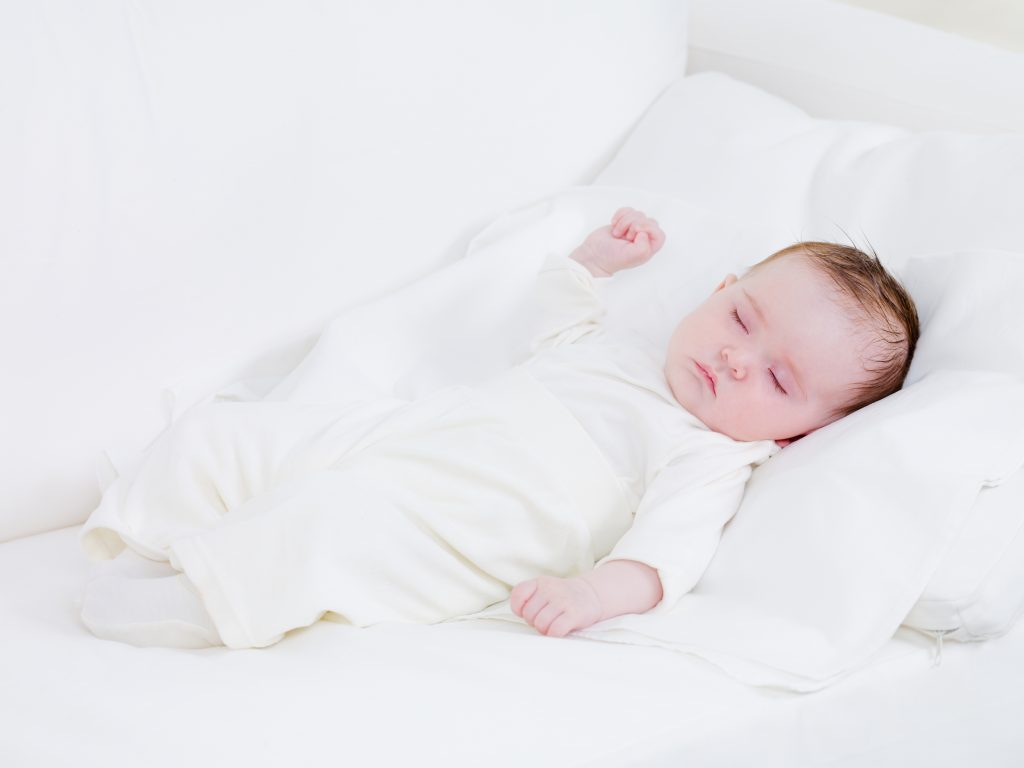
Parents, don’t overdo it. If you’re in a tank top and shorts, don’t bundle up your little one like an Eskimo. Conversely, if it’s winter and you need a sweater, your baby may need two or three more layers. Sleepsacks are also a great alternative to blankets, which pose suffocating risks.
Again, consider where you live to determine what’s best. If you must layer them in more than one piece of clothing, consider not covering their heads, hands, and feet. These areas are essential for releasing body heat, regulating temperature, and preventing overheating.
Depending on where you live and the season, there are many ways to dress a newborn. However, remember that they can’t regulate their temperature until six months old. As such, consider the following tips in addition to the tips above:3
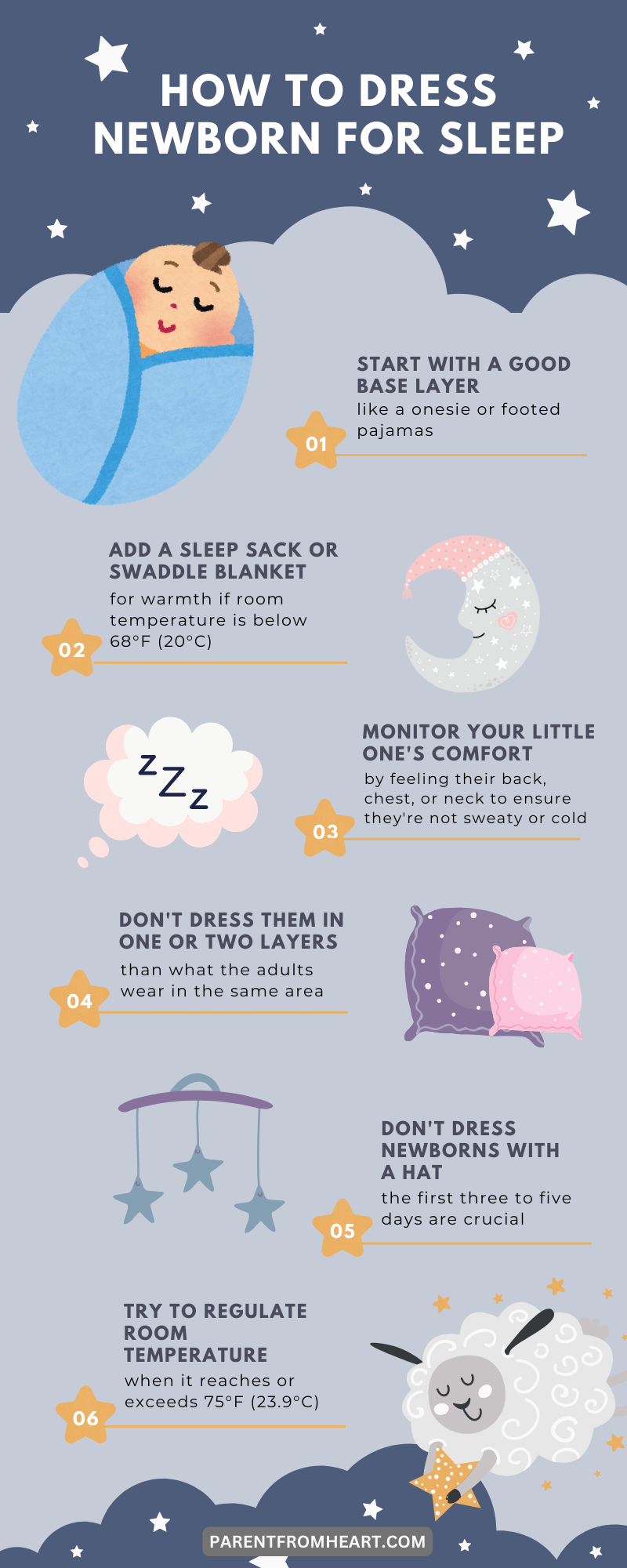
According to the American Academy of Pediatrics, babies under 12 months old shouldn’t sleep with a blanket.4 This is because they’re linked to about 3,400 sudden unexpected infant deaths (SUID) in the U.S. due to accidental suffocation.5 Aside from blankets, other causes of the latter include stuffed toys, pillows, and loose bedding.
Winters can get chilly, especially at night. Therefore, the following can help keep your baby warm and cozy:
Bedtime styling during infancy is also critical. Thankfully, you don’t have major changes to make. They’re similar to the above tips for newborns, so revert to them if you need a refresher. However, keep these changes in mind:
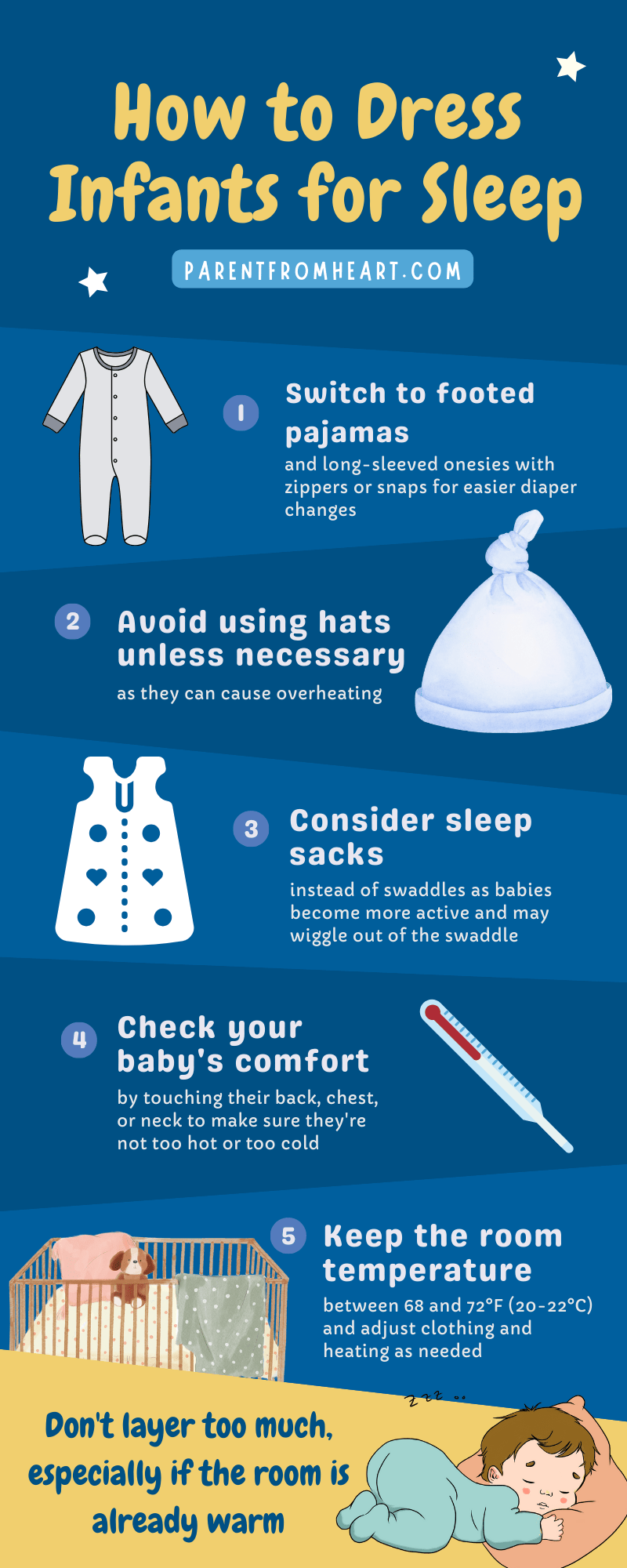
I was ecstatic when my children turned one. They were more grown, and it felt like a big milestone. But with this came the need for some wardrobe changes at bedtime. Here are some adjustments you can expect at this stage:
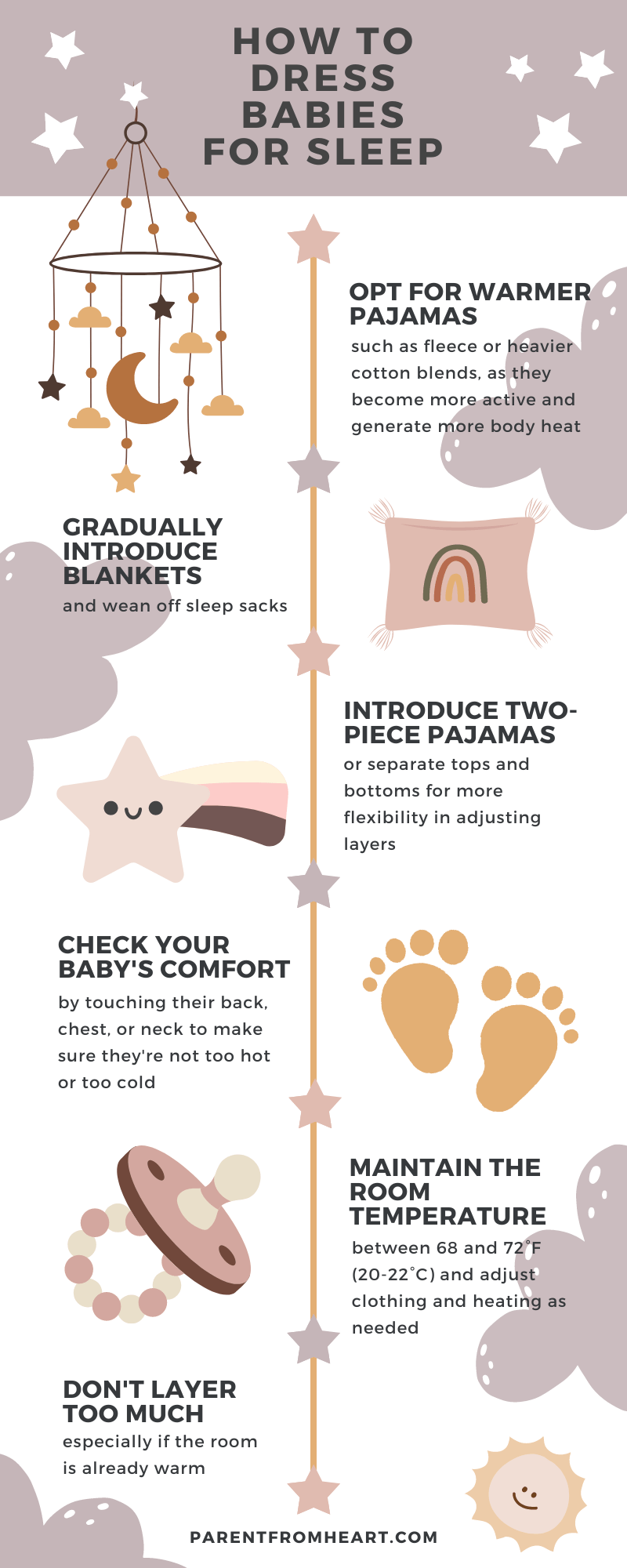
By this time, sleepwear attire becomes more similar to that of adults. Your toddler may be walking, talking, and becoming more independent. In most cases, they may even have preferences on what they want to wear to bed.
I recall how my little boys’ wardrobe was a treasure trove of cute pajamas at this stage. It definitely made bedtime routines more fun. So, for this milestone, here are some things to remember:
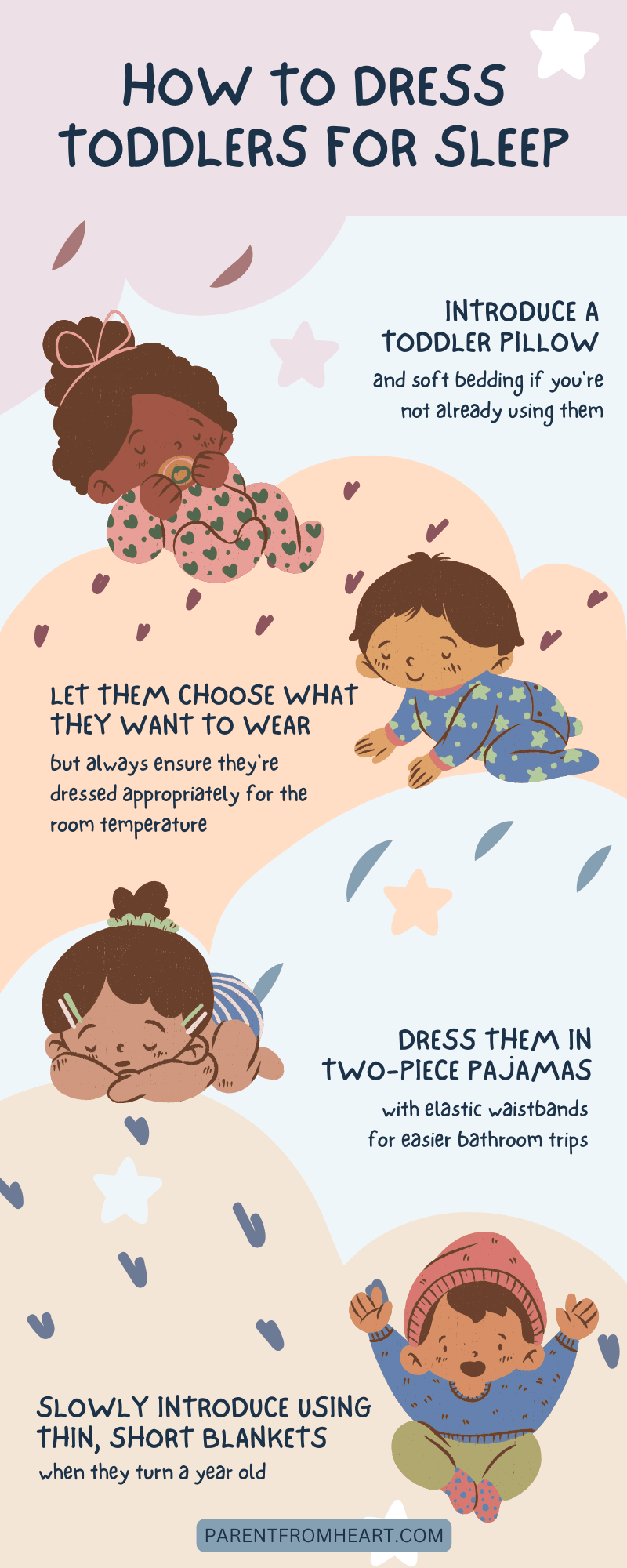
In addition to sleepwear styling, be mindful of the following when putting your little one to sleep:
Talk to your pediatrician for the best recommendation and advice for other sleeping-related concerns. Likewise, adjust as you go along. Your munchkin’s needs and milestones will constantly change, so make sure their sleepwear and sleeping environment change, too.
How to dress baby for sleep is crucial, especially in the first few months of life. Follow the tips above for safety and comfort. Sweet dreams to your little one, and happy parenting!
What other tips do you have for dressing babies and toddlers for sleep? Share your thoughts below!
Being a teenager is like standing on a bridge between childhood and adulthood. It’s exhilarating, confusing, lonely, and…
You know, growing up isn’t a cakewalk. We all face those bumps and hitches that shape us into…
Ever caught yourself nudging a rogue pea back into its lane, even though you’re decades past the kids’…